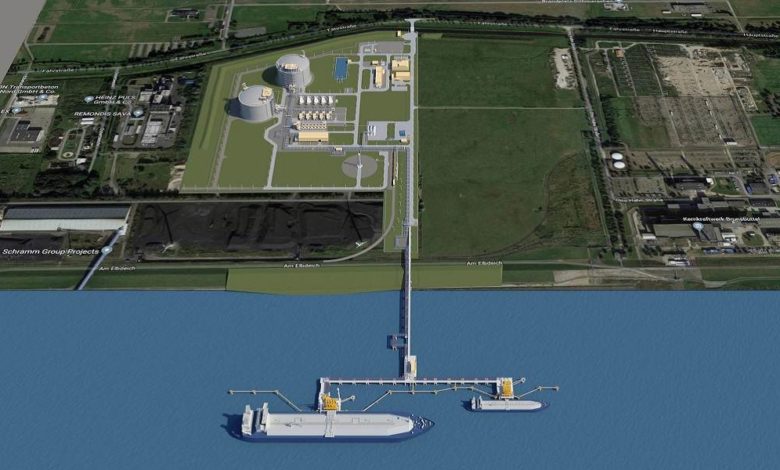
Germany is pressing ahead with plans to build the country’s first liquefied natural gas terminals in order to reduce its dependence on Russian gas imports.
The German state lender KfW (Kreditanstalt fur Wiederaufbau) has signed an agreement to build the terminal in Brunsbüttel with the country’s utility RWE and the Dutch state-owned energy network operator Gasunie. Under the terms of the agreement, KfW will own 50% of the LNG terminal, while Gasunie will operate the facility.
Gasunie stated that it plans to begin construction on the terminal this year, which, in addition to LNG, will also be made suitable for importing green hydrogen. With an annual capacity of 8bn cu m, the terminal could open up the possibility of bringing natural gas onto the German market from areas not served by gas pipelines.
Robert Habeck, minister of German economic affairs and climate, said: “We need to reduce our dependence on imports from Russia as quickly as possible; Russia’s war of aggression against Ukraine is now making this imperative. An LNG terminal in Brunsbüttel will increase the possibilities to import gas to Germany. LNG terminals could be described as an extra by-pass for this. They help us to boost energy security in Germany and Europe. At the same time, our plans are factoring in the switch to green hydrogen and its derivatives from the very outset of the project.”

This is good but it will take time. There are things that can be done in the meantime.
I have an idea that other European states have gas import terminals which are not fully utilised and some of these states havetwo way gas interconnector pipelines. Britain for example has four LNG terminals, one of which, on Teeside, is not in use. There are two two way interconnectors – the BBL has a capacity of 16 billion cubic metres annually and runs from Bacton to North Holland and the Interconnector with a capacity of 25 billion cubic metres runs from Bacton to Zeebrugge.
It would not be beyond the wit of man to import gas into Britain and export it to Germany.